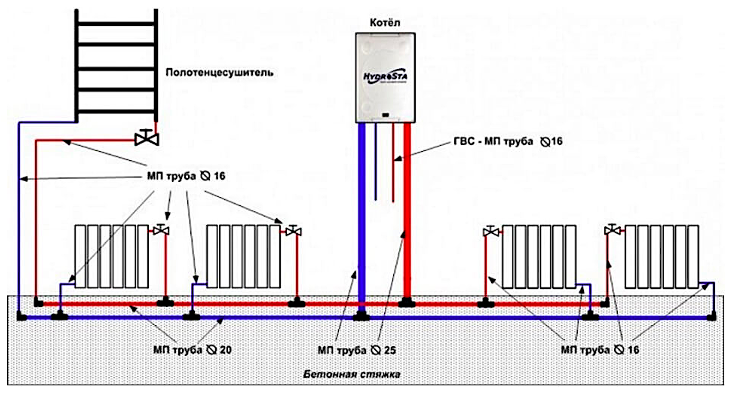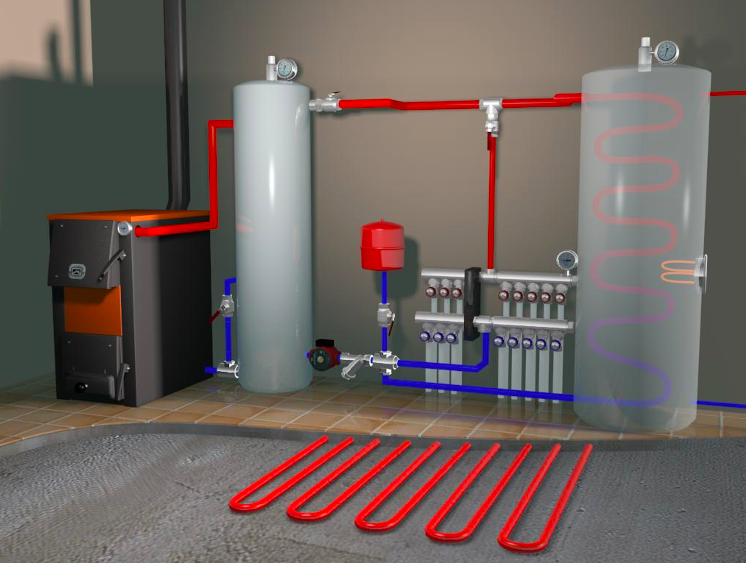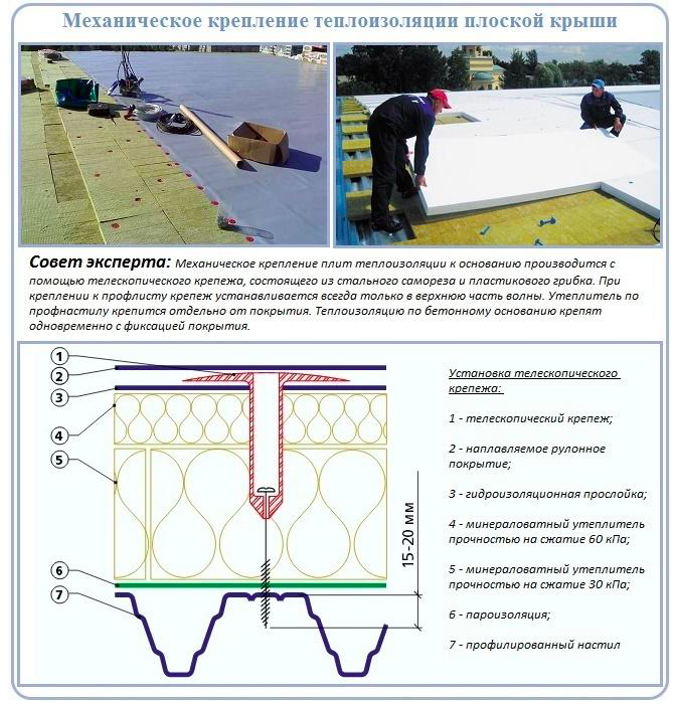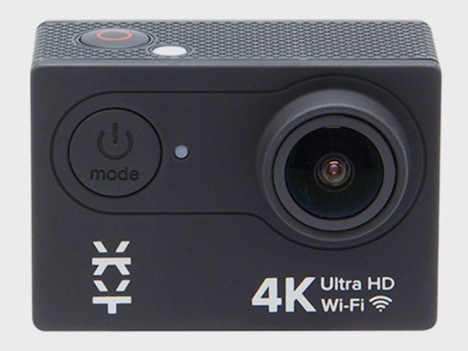Switching to individual heating in an apartment building is possible, but only in agreement with the administration of the city or other locality, as well as with the management company. Technically, it can almost always be implemented, but legally it is not so easy. How to do this, and what documents are required, is described in detail in this material.
The content of the article
- The legislative framework
- Requirements for the premises
- Transition Order
The legislative framework
The current legislation does not exclude individual heating in an apartment building. This is possible, but only in agreement with the municipal administration, for example, with the housing department (reason: Art. 26 LCD).
It should be noted that technically making the transition to an individual heating system is much easier than legally. The fact is that unauthorized restructuring is strictly prohibited. In the legislation, this is interpreted as a “deregulation” of the network of an apartment building. As a result, the rights of other owners and tenants are violated (art. 7.21 of the Code of Administrative Offenses). Self-disconnection from the network can lead to a number of negative consequences:
- overheat;
- improper distribution of heat;
- insufficient heating;
- hydraulic failure, etc.
Violation of the norm can lead to the imposition of a fine or administrative arrest for up to 15 days. Along with this, the citizen is obliged to carry out work at his own expense to bring the system back to its previous state, and if necessary, to compensate for the damage to neighbors, the management company, the organization serving heating networks.
Another important point is related to the payment of utilities. Even if you get permission for a gas boiler in an apartment building, disconnect from the general circuit, this does not exempt you from paying for heating. In accordance with par. 15 art. 14 of the Federal Law "On Heat Supply" each owner is obliged to pay. Therefore, even if you have an autonomous system, you will have to do this monthly, as before.
Requirements for the premises
The redevelopment of the heating system in an apartment building begins with obtaining a permit. However, before that, it is necessary to determine whether the room meets the requirements for installing autonomous heating equipment:
- The minimum area is 4 square meters.
- Standard height - not less than 250 cm.
- The presence of a door with an opening width of 80 cm.
- One or more windows.
- The remoteness of the boiler from the gas stove, heating appliances. There are no strict requirements here, but most often the generally accepted standard is used - at least 50 cm.
- The boiler is mounted only to a load-bearing wall, and a minimum height of 150 cm from the floor surface is observed.
It is important to understand that the boiler, like other elements, can be installed independently. However, only employees of Gorgaz or another service organization have the right to connect it.

Transition Order
The transition to autonomous heating in an apartment building is carried out in 2 stages. First you need to get a refusal to use central heating, after which - permission to install your own system.
To refuse, contact the management company or the HOA. A written application of the established form is submitted, several documents are attached to it:
- documents for an apartment (purchase agreement, certificate of ownership or extract from the USRN);
- technical certificate;
- reconstruction project (compiled separately at the expense of the customer);
- written consent of each citizen registered in the apartment (on behalf of children up to 13 years old inclusive, their parents act);
- consent of the housing department of the organization to install an individual heating system;
- consent of the authority for the protection of architectural monuments (if the house has a conservation status).

After receiving the documents, representatives of the management company consider the application up to 30 working days and provide written consent or refusal. In the latter case, you can go to court to challenge. If the decision is positive, you can proceed to the selection of equipment, materials and the actual installation.


